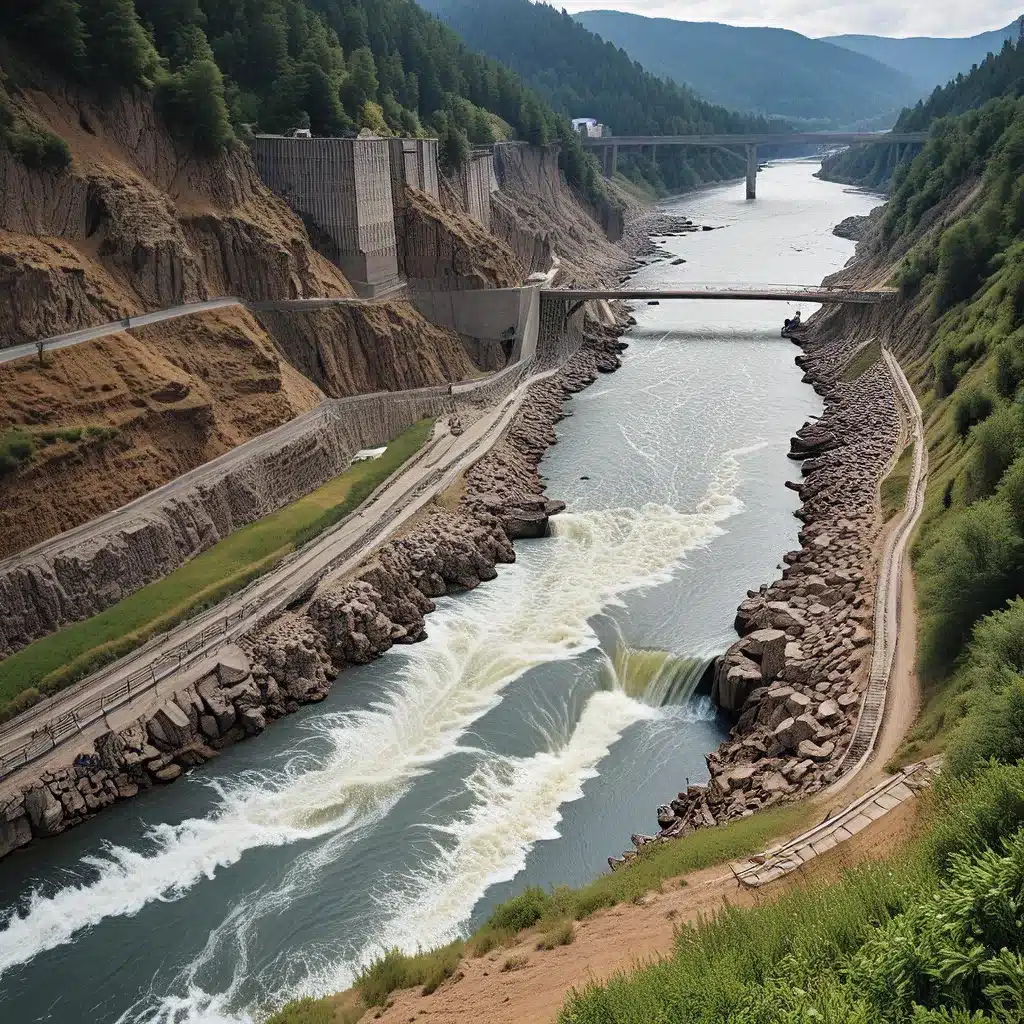
Unlocking the Power of Flowing Water
I’ll never forget the first time I visited a hydroelectric power plant. The sheer scale of the engineering, the thunderous roar of the turbines, and the palpable sense of raw, renewable energy – it was a truly awe-inspiring experience. As I stood in the shadow of the towering dam, I couldn’t help but wonder: how exactly does this technology harness the power of nature’s flowing waters?
Hydropower has long been a reliable source of renewable electricity, dating back to the late 19th century when the world’s first hydroelectric plant began operating in Appleton, Wisconsin. Since then, this technology has grown by leaps and bounds, now providing around 16% of the world’s electricity generation. And yet, even as traditional hydroelectric dams have become ubiquitous, a new wave of innovation is transforming the field – the rise of hydrokinetic hydropower.
Harnessing the Kinetic Energy of Flowing Water
Hydrokinetic hydropower, also known as in-stream hydropower, is a revolutionary approach that taps into the kinetic energy of natural water flows, without the need for large, landscape-altering dams. Instead of relying on the potential energy created by a dam’s reservoir, these systems strategically position underwater turbines and devices directly in the path of rivers, tidal currents, and ocean streams.
The beauty of hydrokinetic systems lies in their environmental harmony. Unlike their dam-dependent counterparts, these technologies have a minimal impact on local ecosystems. Fish and aquatic life can navigate around or even through the unobtrusive systems, preserving the delicate ecological balances that traditional hydropower often disrupts.
But the benefits of hydrokinetic hydropower go beyond just environmental considerations. These systems are remarkably versatile, capable of harnessing the power of a wide range of water bodies – from swift river currents to the relentless energy of ocean tides. This versatility makes them an ideal solution for regions with consistent water flows, offering reliable and sustainable energy generation.
Powering the Off-Grid Future
One of the most exciting applications of hydrokinetic hydropower is its ability to empower off-grid and remote communities. In areas where traditional power grids are inaccessible or impractical, these submerged systems can provide clean, renewable energy to isolated settlements and installations. By promoting energy access worldwide, hydrokinetic technology is transforming lives and unlocking new possibilities for sustainable development.
Imagine a remote village nestled deep in the Amazon, or a research outpost perched on the edge of the Arctic Circle. These are precisely the kinds of places where hydrokinetic systems can make a profound difference, bringing reliable electricity to communities that would otherwise be left in the dark. And the best part? The systems are virtually invisible, blending seamlessly into the natural landscape and preserving the stunning beauty of these remote waterways.
The Cutting Edge of Renewable Energy
While hydrokinetic hydropower is undoubtedly a promising technology, it’s important to note that it’s still very much in the research and development stage in many cases. Engineers and innovators are working tirelessly to enhance the efficiency, durability, and cost-effectiveness of these systems, paving the way for wider adoption.
Some forward-thinking projects are even exploring the synergy of hydrokinetic systems with other renewable technologies, like solar and wind power. By creating hybrid energy systems, these pioneers are unlocking new frontiers in clean energy generation, maximizing the potential of nature’s diverse resources.
Of course, with any emerging technology, there are challenges to navigate. Regulatory hurdles and environmental considerations must be carefully addressed to ensure the responsible deployment of hydrokinetic systems. But with the right approach, I believe we can harness the power of flowing water in a way that is both sustainable and eco-conscious.
Unlocking the Future of Clean Energy
As I reflect on my experience at that hydroelectric power plant, I can’t help but feel inspired by the incredible potential of this technology. From the towering dams of traditional hydropower to the discreet, submerged marvels of hydrokinetic systems, the story of harnessing the flow of rivers and streams is one of innovation, resilience, and a relentless pursuit of a greener, more sustainable future.
And let’s not forget the practical benefits of this technology. By providing reliable, renewable electricity, hydropower plays a crucial role in powering our communities, reducing our reliance on fossil fuels, and mitigating the impact of climate change. It’s a technology that holds the power to transform lives, empower off-grid regions, and reshape the very landscape of our energy landscape.
As the research and development continue, I can’t wait to see what the future holds for hydrokinetic hydropower. Will we unlock new frontiers of efficiency and cost-effectiveness? Will these systems become a ubiquitous presence in our waterways, quietly generating clean energy and preserving the natural beauty of our rivers and streams? Only time will tell, but one thing is certain: the flow of water is a force to be reckoned with, and we are just beginning to harness its full potential.

